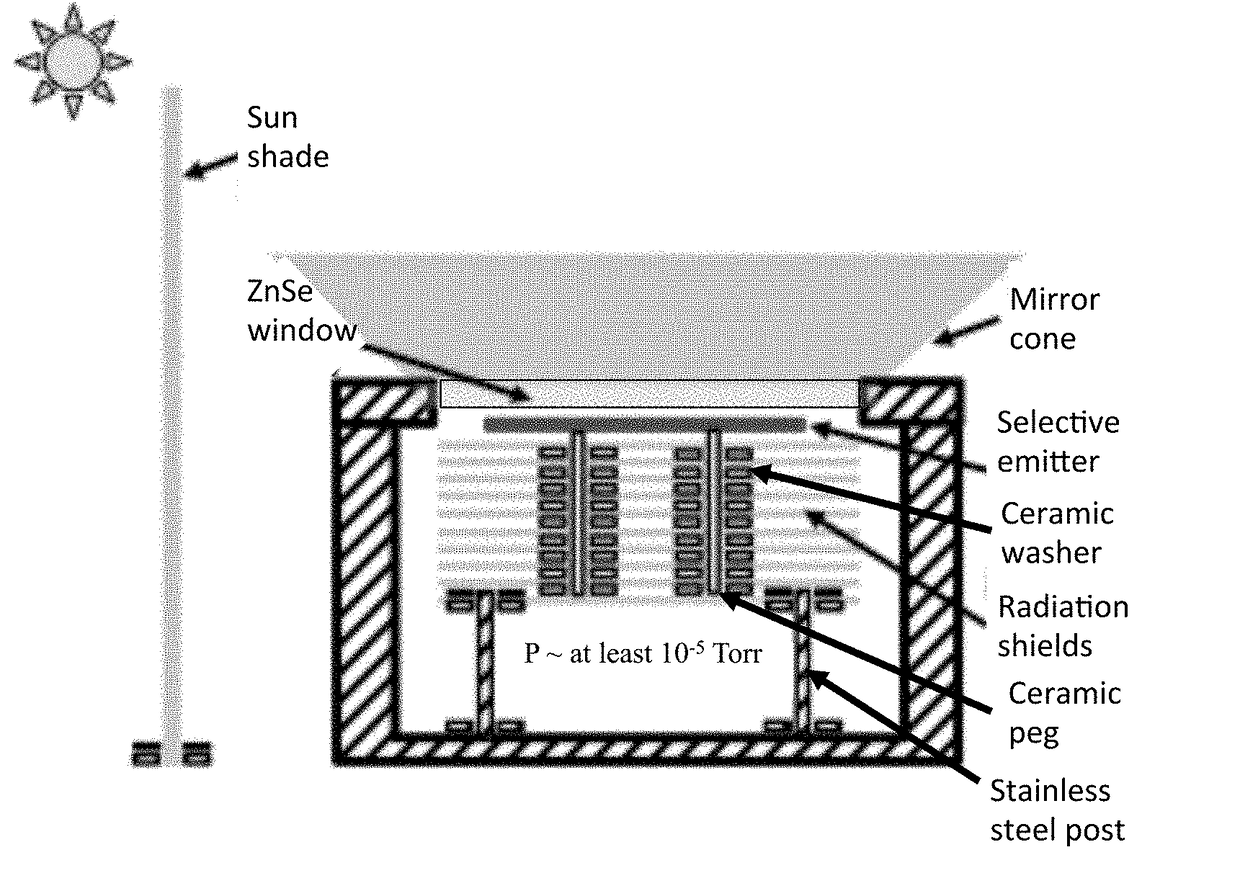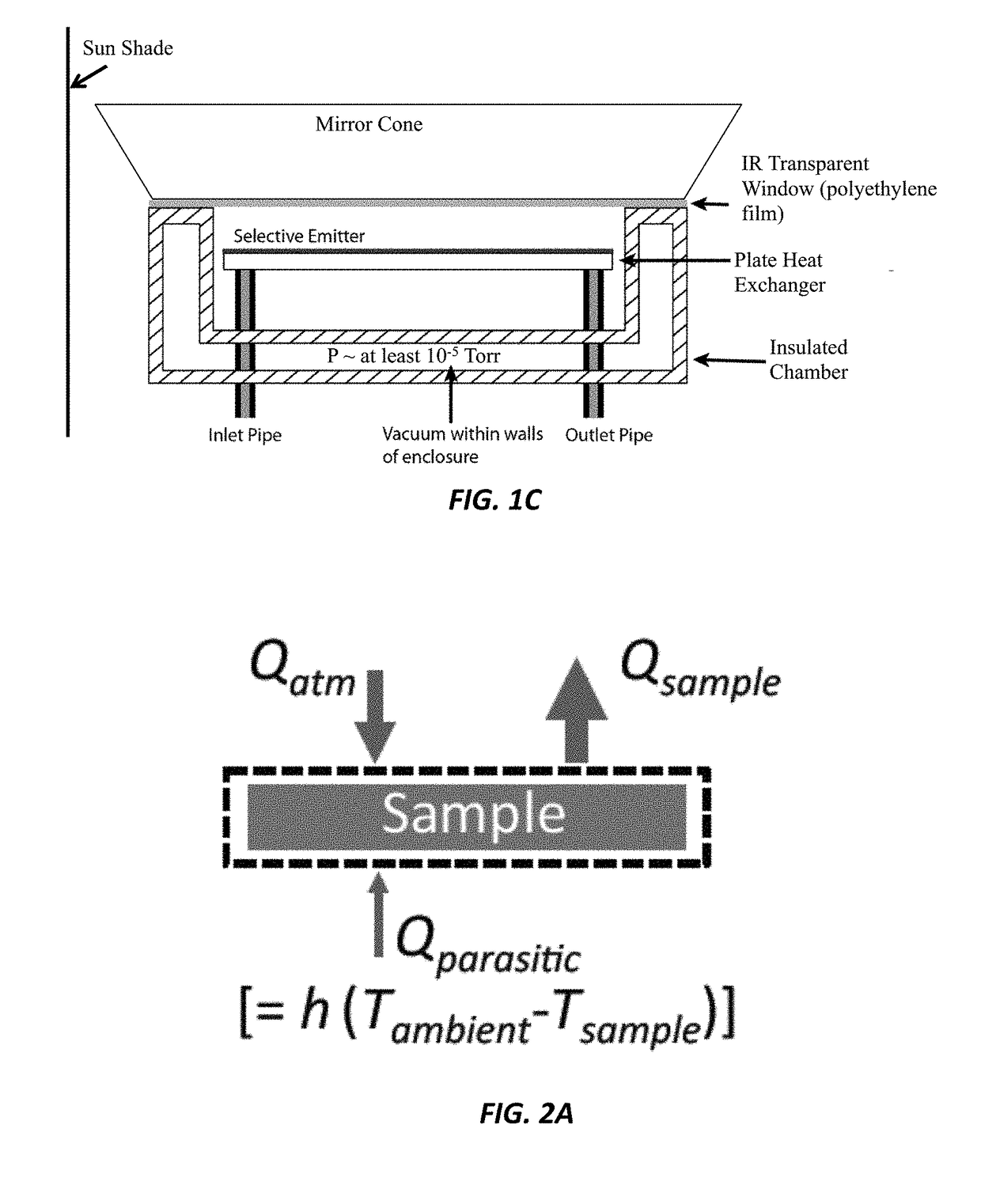Ultrahigh-Performance Radiative Cooler
a radiative cooler, ultra-high-performance technology, applied in refrigeration and liquidation, lighting and heating apparatus, refrigeration machines, etc., can solve the problems of hindering the wide application of radiative cooling, limiting the demonstration performance so far, and limiting the performance achieved so far
- Summary
- Abstract
- Description
- Claims
- Application Information
AI Technical Summary
Benefits of technology
Problems solved by technology
Method used
Image
Examples
Embodiment Construction
[0025]Radiative cooling technology utilizes the atmospheric transparency window (8-13μm) to passively dissipate heat from the earth into outer space (3K). This technology has attracted broad interests from both fundamental sciences and real world applications. However, the temperature reduction experimentally demonstrated thus far has been relatively modest. The current invention provides ultra large temperature reduction for as much as 60° C. from ambient, and demonstrates a temperature reduction that far exceeds previous works. In a populous area at sea level, the invention has achieved an average temperature reduction of 37° C. from the ambient air temperature through a 24 hour day-night cycle, with a maximal reduction of 42° C. that occurs at peak solar irradiance. This invention demonstrates a significant fundamental potential for radiative cooling, which may have practical impacts ranging from passive building cooling, renewable energy harvesting, and passive refrigeration in ...
PUM
 Login to View More
Login to View More Abstract
Description
Claims
Application Information
 Login to View More
Login to View More - R&D
- Intellectual Property
- Life Sciences
- Materials
- Tech Scout
- Unparalleled Data Quality
- Higher Quality Content
- 60% Fewer Hallucinations
Browse by: Latest US Patents, China's latest patents, Technical Efficacy Thesaurus, Application Domain, Technology Topic, Popular Technical Reports.
© 2025 PatSnap. All rights reserved.Legal|Privacy policy|Modern Slavery Act Transparency Statement|Sitemap|About US| Contact US: help@patsnap.com



